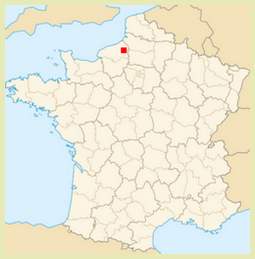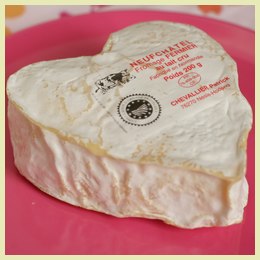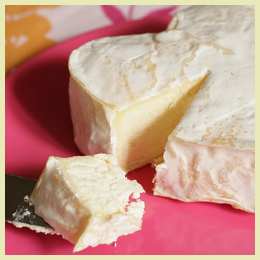French Neufchatel Cheese
You may already be familiar with the Neufchatel cheese which is readily available in North America and which closely resembles American cream cheese. French Neufchâtel cheese is a completely different experience and one worth seeking out if you have never had the pleasure.
History

Neufchâtel is another one of those French cheeses that has been around for hundreds if not thousands of years. It is made near the town of Neufchâtel-en-Bray on the Normandy coast and it is of course from here that it draws its name.
Normandy is a notoriously rainy place although it also enjoys a temperate coastal climate. Warmer temperatures plus lots of rain means green grass is available for grazing for a longer period each year then in many places. The fact that it is made from the milk of primarily grass grazing cows gives Neufchatel some of its distinctive flavor and characteristics.
Designated by an AOC (appellation d'origine controlée) since 1969, Neufchatel cheese is made in a carefully controlled process that includes adding the mold penicillium candidum, pressing, and aging at about 50° F and 95 percent humidity. This cheese is ripened for at least 12 days for a mild tasting young Neufchatel, and up to several months for a much more flavorful older cheese.
Characteristics
- Soft, uncooked, pressed cheese, similar to a Brie or a Camembert.
- Dry, downy, white rind, that is edible.
- Creamy, yet crumbly, this cheese spreads easily.
- The cheese becomes softer, more crumbly and more flavorful as it ages.
The Form
Supposedly reflecting the fact that originally different cheese makers used whatever form they had to mold Neufhcatel, it comes in a variety of presentations weighing from a couple of ounces up to a little more then a pound, including squares, logs, bricks and most charmingly a heart shape, called a Coeur de Bray. This may smack of modern day marketing, but in truth the tradition of making Neufchatel cheese in the shape of a heart dates back many centuries.


According to popular anecdote, flirtatious Norman cheese makers (or their daughters perhaps) first made Neufchatel cheese in the shape of a heart to woo the affections of British soldiers who were passing through during the Hundred Years War in the Middle Ages. If it is true, I am sure that more then one Brit was won over by such a delicious and charming gift.
Enjoying Neufchatel
The most important step in enjoying this cheese is to make sure you have the real stuff. While I'm sure American Neufchatel is quite delicious in its own right, I believe it is more apt for making various dishes calling for cream cheese. French Neufchatel can often be found in gourmet cheese shops as well as being produced by various artisanal cheese makers.
- As always, make sure your cheese is at room temperature before enjoying it.
- Spread Neufchatel cheese on toasted walnut bread or a slice of pain d'epices and serve it with apple cider for a typical French taste experience.
- Which wine to drink with your Neufchatel depends somewhat on its age. A very young cheese can be enjoyed with a white wine, but an older cheese with pronounced flavor should be balanced with a stronger wine such as a Bordeaux.
Cooking with Neufchatel
Real French Neufchatel does not work as a substitute for cream cheese in recipes, so don't try that. Neufchatel does melt into dishes and you can use it in an omelet, a quiche, a scalloped potatotes recipe or to top a pizza. It can also be diced and added to a green salad.Return to French Cheese.
New! Comments
Have your say about what you just read! Leave me a comment in the box below.